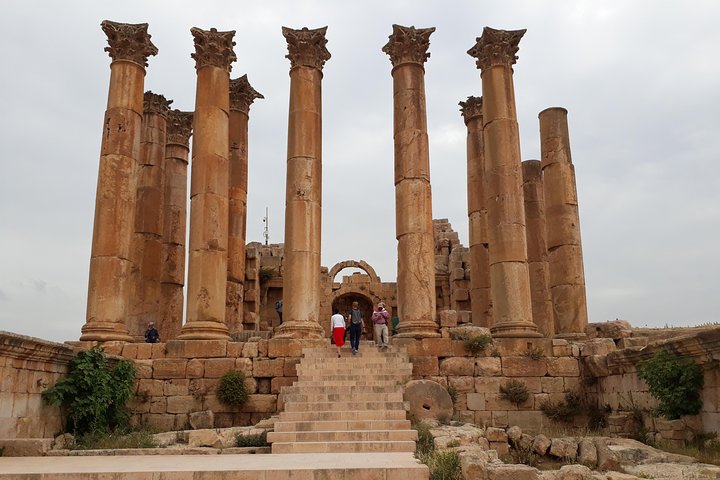Unveiling Irbid: A Journey Through Time and Culture
Drawn by the allure of Irbid’s ancient architecture and vibrant streets, I embarked on a walking tour to uncover the city’s hidden stories and historical significance. Join me as I explore the “Bride of the North” and its captivating blend of old and new.
Discovering Irbid: A City of Stories
Irbid, often referred to as the “Bride of the North,” is a city that pulses with life and history. As a former city planner turned travel writer, I was drawn to its vibrant streets and the promise of ancient tales hidden within its architecture. The Irbid Walking Tour was my gateway to this northern Jordanian gem, and it did not disappoint.
The tour began with a stroll through the bustling streets, where modernity meets antiquity. Our guide, a local historian with a passion for storytelling, painted vivid pictures of Irbid’s past. We learned about its significance during the Roman era, a time when the city was a vital hub of trade and culture. The guide’s anecdotes brought the ancient stones to life, making it easy to imagine the bustling markets and grand structures that once stood here.
As we wandered, I couldn’t help but notice the blend of old and new. The city’s architecture is a testament to its rich history, with Ottoman-era buildings standing proudly alongside contemporary structures. Each corner seemed to whisper secrets of the past, inviting us to delve deeper into Irbid’s storied streets.
Museums and Marvels
One of the highlights of the tour was our visit to the Museum of Archaeology & Anthropology. This treasure trove of history houses artifacts that date back thousands of years, including 9000-year-old Neolithic statuettes discovered near Amman. As someone who has always been fascinated by urban landscapes and their evolution, I found the museum’s exhibits to be a captivating glimpse into the region’s ancient past.
The museum’s collection is a testament to Irbid’s historical significance, showcasing items that tell the story of the city’s role in the broader tapestry of Jordanian history. From pottery to tools, each artifact offers a window into the lives of those who walked these lands long before us.
Our guide’s enthusiasm was infectious, and their knowledge of the exhibits added depth to our understanding of Irbid’s place in history. It was a reminder of the importance of preserving these stories and sharing them with future generations.
Hidden Gems and Local Charm
Beyond the museums and historical sites, the Irbid Walking Tour also introduced us to the city’s hidden gems. We explored charming neighborhoods, where narrow alleyways led to bustling markets and cozy cafes. These vibrant pockets of the city offered a glimpse into the daily lives of Irbid’s residents, showcasing the warmth and hospitality that Jordan is known for.
One of my favorite moments was stumbling upon a small, family-run bakery tucked away in a quiet corner. The aroma of freshly baked bread wafted through the air, drawing us in. The owner, a jovial man with a twinkle in his eye, welcomed us with open arms and shared stories of his family’s history in Irbid. It was these personal connections that made the tour truly special, adding a layer of authenticity to the experience.
As the sun set over the city, casting a golden glow on the ancient stones, I felt a deep appreciation for Irbid and its rich tapestry of history and culture. The walking tour had not only introduced me to the city’s past but also to its vibrant present, leaving me eager to explore more of Jordan’s hidden treasures.
































